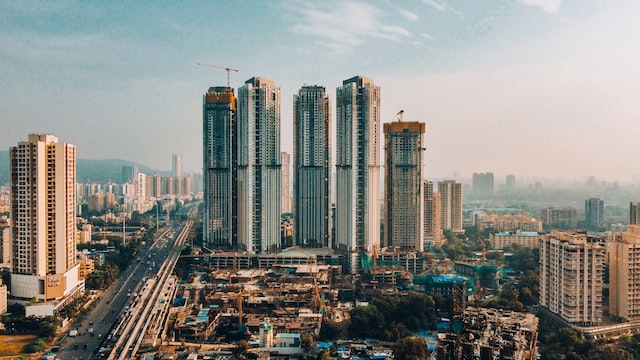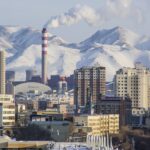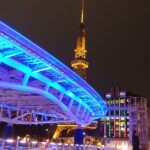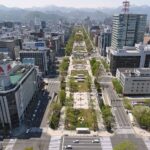Mumbai has a vast and effective public transportation system. It comprises ferries, autorickshaws, taxis, trains, suburban rail, buses, and more. The most important way to get around is on the Mumbai Suburban Railway, which serves more than seven million people every day and is the city’s lifeline. A rapid transit system serving the city and its suburbs is the Mumbai Metro. India’s first monorail, the Mumbai Monorail, debuted in 2014. A lot of people in cities can also afford to take buses and auto rickshaws, which are common ways to get around. Although they can be more expensive than other modes of transportation, taxis are also available for hire.
Basic information about the Metro system in Mumbai
Over 200 kilometers of track are covered by the 14 lines that make up the Mumbai metro system. It was India’s first metro system when it debuted in 2014. Millions of commuters use the metro system every day, making it one of the busiest in the world. It runs on both AC and DC electricity from 4:30 a.m. to 1:00 a.m. There are 160 stations altogether, 11 of which are interchanges. The metro also has a mobile ticketing system that lets people use their smartphones to buy passes and tickets. For commuters, this approach has made the metro experience simpler and more convenient.
The lines of the Mumbai subway system
The subway system in Mumbai, which is the country’s financial and entertainment capital, is one of the most important ways to get around the city. The Mumbai Metro Rail Corporation (MMRC) is in charge of the 14 metro lines and 210 km of track that make up the Mumbai Metro system.
The Versova-Andheri-Ghatkopar (VAG), Dahisar-DN Nagar-Mankhurd (DNM), and Ghatkopar-Thane-Kasarvadavali (GTK) lines are the three primary lines that make up the Mumbai Metro. With a length of 46.4 kilometers, the VAG line is the longest and busiest line in the system. This line connects Versova to Ghatkopar and includes a total of 12 stations. From Dahisar to Mankhurd, the DNM line is 18.5 kilometres long and comprises 13 stations. With a total length of 11.4 kilometers and 10 stations, the GTK line is the shortest of the three major lines, extending from Ghatkopar to Kasarvadavali.
The Mumbai Metro has four extra lines in addition to the three main ones that connect it to the rest of the city. The Wadala-Ghatkopar-Mulund (WGM), Charkop-Bandra-Mankhurd (CBM), and Airport Express Lines are among these lines. Wadala-Ghatkopar-Thane-Kasarvadavali (WGTK) is another. There are 11 stops along the 13.5 km long WGTK route. From Wadala to Kasarvadavali, it travels. The WGM line is 15 kilometers long and has 12 stops between Wadala and Mulund. From Charkop to Mankhurd, the CBM line is 11.4 kilometers long and features 10 stations. Chhatrapati Shivaji Maharaj International Airport and Ghatkopar are both served by the 11-kilometer, 7-station Airport Express Line.
The Mumbai Metro system is the best and most reliable way for people to get around the city. In addition, it is the most affordable method to go around the city, with prices ranging from $8 to $40, depending on how far you go. The air-conditioned coaches, security guards, and CCTV cameras on board each train all contribute to the metro’s ability to give passengers a comfortable and secure experience.
Map of Mumbai Metro 2023 – Free Download in PDF
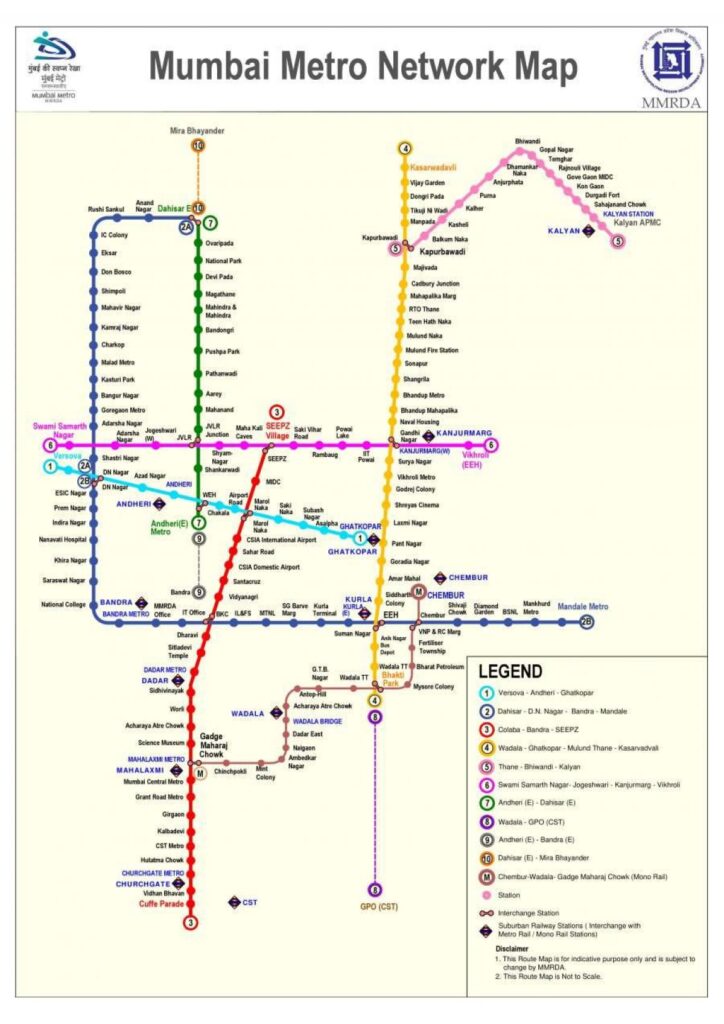
You may now download the Map of Mumbai Metro 2023 for free in PDF format. Travelers to Mumbai will be able to quickly find their way around the city and its metro system with the help of this indispensable resource. This map shows all of the Mumbai Metro system’s existing and future lines, stops, and interchanges. It also offers useful details on the various zones and rates. Anyone can now confidently and easily plan their route with this map.
Public transport tickets in Mumbai – Best types for travelers & actual prices
Even though Mumbai’s public transportation system is among the biggest and most effective in the world, it can be made even easier and more fun with the correct ticket options, costs, and knowledge. Here, we’ll provide you with all the details you need to know about public transportation tickets in Mumbai, including their types, costs, and more.
Mumbai offers a variety of public transportation tickets. Single-journey tickets, which can be purchased for one-way travel on a single mode of transportation, like a bus or train, are the most popular. The cost of these one-way tickets depends on the distance covered. Depending on the distance, a single-ride ticket might cost as little as Rs. 5 or as much as Rs.
Season tickets and monthly passes are additional ticket options in Mumbai. Season tickets range in price depending on how long they are used for, from one-day passes to annual passes. Monthly passes are ideal for seasoned travelers and provide fare discounts. Passes for a month are available for Rs. 50 for a duration of 30 days.
In addition to these tickets, Mumbai also has a wide range of cards and vouchers. These include the Metro Card, the Local Train Smart Card, and the BEST Bus Smart Card. The Metro Card and the Local Train Smart Card are used to paying for rides on the Mumbai Metro and the suburban railway, respectively. The BEST Bus smart card, on the other hand, is a stored-value card that can be used to travel by bus.
Last but not least, Mumbai has a mechanism for online ticket sales that enables users to do so. This system provides discounts on fares and is safe and simple to use.
For its public transit system, Mumbai offers a wide variety of tickets, vouchers, and coupons. There is a choice that will meet your demands, whether you are a traveller who travels frequently or a tourist who only occasionally. You can get more out of your trip to Mumbai if you choose the right ticket category, price, and details.
Summary of fares for public transport in Mumbai
- Mumbai provides a range of tickets for its public transportation system, including one-way, season, and monthly passes.
- Season and monthly passes are offered at reduced rates.
- An online ticketing system with savings and security features is offered. It offers the Metro Card, Local Train Smart Card, and BEST Bus Smart Card.
Timetables & Schedules of the Mumbai Metro system
The Mumbai Metro runs from 5:30 a.m. to 1:00 a.m. every day. At the starting station, the first train leaves at 5:30 in the morning, and the final train leaves at 12:30 in the morning. Trains arrive every four minutes during peak hours. In off-peak hours, the frequency drops to every 8 minutes. The frequency on Sundays and holidays is every ten minutes. The Mumbai Metro system offers commuters a quick and dependable means of transit, making it an effective way to get around the city.
What Are Other Options for Public Transportation in Mumbai?
Mumbai is one of the most populated cities in the world, and it has a thriving public transportation system. There are numerous alternative modes of public transit in the city, even though the metro system is a well-liked way to move around. There are a number of alternative possibilities to take into account, whether you’re seeking a quicker, more practical method of transportation or a less expensive choice.
The train is one of the most often used modes of public transportation in Mumbai. The city has a vast rail system with numerous lines linking to different locations. The most common way to get around the city is on the Mumbai Suburban Railway, also known as the “Local.” It is the most well-known and complete rail system in the city. The local is not only quick and effective but also remarkably cheap.
A variety of bus services are also provided by the city. The city offers a wide range of bus services, including express and private buses. While private buses are frequently more affordable and pleasant, express buses are a terrific option for traveling swiftly. Luxury bus services are also available for individuals who like to travel in style.
There are various taxi services in the city for people who would rather travel in the comfort of their own cars. Along with automobile rental options, there are both private and shared taxis available. Even though they are occasionally slightly more expensive than other options, taxis are a terrific method to travel swiftly and easily.
Additionally, auto rickshaws are accessible throughout the city. Mumbai residents frequently use auto-rickshaws as a handy and affordable mode of transportation. They are compact, three-wheeled vehicles that can carry up to four people and are a terrific way to go rapidly through the city.
In addition to the metro, Mumbai has a variety of other public transit choices. There are numerous transportation options, including cabs, auto rickshaws, and trains and buses. There is a choice that can meet your needs, regardless of whether you’re seeking budget, convenience, or speed.
How to Take Public Transportation From Chhatrapati Shivaji Maharaj International Airport (BOM) to the City Center
If you want to get from Chhatrapati Shivaji Maharaj International Airport to the center of the city, you have a number of options. Instead of dealing with private transfers or taxis, public transportation is a terrific way to move around and is much more convenient. Here is how to use public transportation to travel from Chhatrapati Shivaji Maharaj International Airport to the city centre.
There are many bus and train alternatives that connect the airport to the city core. The airport’s own bus service, called “Navjeevan,” travels to and from the city center while stopping at various locations. In addition, the airport has a specialized train station called “Virar Station” that is close to the city’s core. From this station, a normal suburban train will take you into the city.
As an alternative, you can get from the airport to the city center by taxi or ridesharing. At the airport, there are many taxi booths and ride-sharing services, making it simple to get where you’re going. It’s crucial to keep in mind that these services can cost more than public transit, so it’s advisable to evaluate costs before choosing a means of transportation.
No matter which route you take, it’s simple to use public transportation to travel from Chhatrapati Shivaji Maharaj International Airport to the city centre. You can get to your destination quickly and easily with the many bus and train options that are available. So be sure to use the accessible public transportation choices when you’re on your way to the city center next.
What kind of sightseeing do you have to do if you visit Mumbai for the first time?
Mumbai is without a doubt one of the top tourist destinations in India. Mumbai is a must-visit location for any traveler since it is home to some of the most recognizable landmarks. The biggest city in India has a lot to offer everyone, from old buildings and famous sites to busy markets and quiet beaches.
The Gateway of India is one of Mumbai’s most popular tourist destinations. People enter the city through this famous arch, which is one of the most recognizable buildings in the country. It is the perfect site to begin exploring the city because it is at the point of Mumbai Harbour.
Haji Ali Dargah is another well-liked tourist destination in Mumbai. This magnificent location combines a mosque, a tomb, and a place of worship. It is a must-see sight for any visitor to the city and is situated on an island off the coast of Mumbai. The mosque is a must-see destination due to its intricate design and rich history.
The Chor Bazaar is one of the most well-liked options for people who want to see some of Mumbai’s busy markets. This market is renowned for its extensive assortment of jewelry, art, antiques, and other items. It is also an excellent spot to buy some trinkets to bring back with you.
A journey to one of Mumbai’s many beaches is a must for any trip there. The best beach in the area, Juhu Beach, is known for its beautiful sunsets, golden sand, and busy atmosphere. It’s a terrific place to sample some of Mumbai’s renowned street food.
Last but not least, everybody visiting Mumbai must go to the Elephanta Caves. These historic caverns, which are situated on a little island in the middle of the Arabian Sea, are home to some of the best Hindu and Buddhist sculptures in all of India.
These are just a few of the best places to visit in Mumbai, which is home to many other incredible sights and experiences. There is plenty to enjoy in Mumbai for everyone, whether you want to see historical sites or experience the city’s thriving culture.
Summary of our tour guide for Mumbai
The big city of Mumbai in India is known for both its rich culture and its strong economy. It is India’s financial center, and the Bollywood film industry is based there. Mumbai is one of the world’s most populated cities, with a population of over 20 million. Mumbai has a robust and dependable public transportation system, with the Mumbai Suburban Railway, Metro, Buses, Taxis, and Auto-rickshaws all offering convenient and reasonably priced access to the city. The city has a well-developed transportation system, including a reliable road and highway network that makes getting around the city simple.
Top 5 FAQs and answers about Mumbai public transport?
- What kinds of public transportation are offered in Mumbai?
- Local trains, buses, taxis, auto rickshaws, and ferries make up Mumbai’s public transportation network. The local train system is the most widely used and effective mode of transportation in the city. It is the quickest route to commute to and from work and covers the majority of the city and its suburbs. The buses are another excellent choice because they link the many areas of the city. For short trips, taxis and auto rickshaws work well, but boats are the most practical means to reach the nearby islands of Mumbai.
- How secure is Mumbai’s public transportation system?
- Mumbai’s public transportation is typically secure, however there are some safety measures that must be taken. The most crucial thing is to stay away from late-night travel because it can be hazardous. Additionally, it’s critical to always remain watchful and aware of one’s surroundings. When travelling alone, women in particular need to exercise caution.
- Is Mumbai’s public transportation reasonably priced?
- Mumbai’s public transportation costs are reasonable, especially when compared to those in other Indian cities. Buses and other modes of transportation are frequently quite low, and local train rates start at just a few rupees. The prices, however, may change based on the route taken and the time of day.
- In Mumbai, are there any discounts for using the public transportation system?
- Yes, Mumbai offers a number of discounts on public transportation. Discounts on tickets are available for seniors and students, and there are occasionally many promotional offers as well.
- How dependable is the public transportation in Mumbai?
- Although the public transportation system in Mumbai is typically dependable, there may occasionally be delays or disruptions because of traffic or other factors. It is best to verify the schedules in advance of your trip to prevent delays.
Useful links

